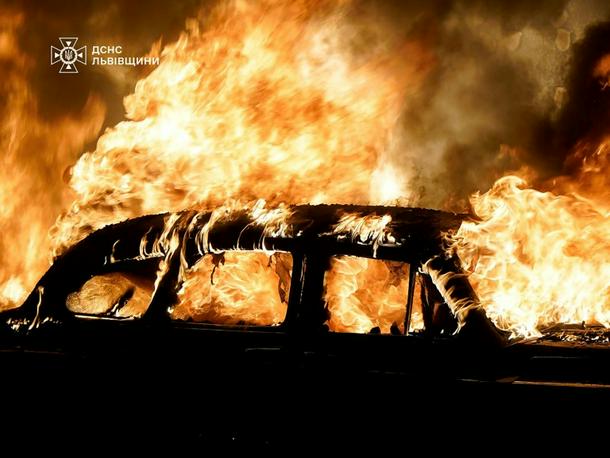
Moscow has stepped up aerial strikes over recent months as US-led ceasefire talks have stalled
Kyiv (Ukraine) (AFP) - Russia fired more than 620 drones and long-range missiles overnight, killing at least six people in the latest wave of strikes, Ukraine said Saturday, adding that it was close to an agreement to receive more Patriot air-defence systems.
“The Russians continue to use their specific tactics of terror against our country, striking concentrated blows at one city or another, at one region or another,” Ukrainian President Volodymyr Zelensky said in his evening address.
Moscow has stepped up aerial strikes over recent months as US-led ceasefire talks have stalled.
“Twenty-six cruise missiles and 597 attack drones were launched, of which more than half were ‘Shaheds’,” Zelensky said, referring to Iranian-made drones.
The Ukrainian air force said it had downed 319 Shahed drones and 25 missiles, adding that one missile and about 20 drones had hit “five locations”.
Zelensky said the strikes had killed at least two people and wounded 20 in the southwestern Chernivtsi region, far from the front lines of the east and south.
Twelve people were wounded in Lviv, also in the west, while in the east, two people died in Dnipropetrovsk and three were wounded in Kharkiv, local officials said.
Russia also “dropped two guided aerial bombs on the homes of civilians” in the northeastern Sumy region killing two, the local prosecutors office said.
- ‘Deliberate and despicable’ -
Zelensky said that some of the drones sent by Russia had been “simulators” intended to “overload the air-defence system and make it more difficult to shoot down the ‘suicide drones’. This is their deliberate and despicable terror.”
The Russian defence ministry said it had targeted companies in Ukraine’s military-industrial complex in Lviv, Kharkiv and Lutsk and a military aerodrome.
In a video message, Zelensky said “we are close to reaching a multi-level agreement on new Patriot systems and missiles for them”. Ukraine was stepping up production of its own interceptor systems, he added.
US special envoy Keith Kellogg is due to begin his latest visit to Ukraine on Monday as a Washington-led peace effort flounders. US President Donald Trump also said he would make a “major statement… on Russia” on Monday.
On Friday, the Kremlin restated its opposition to a European peacekeeping force in Ukraine, after French President Emmanuel Macron said Kyiv’s allies had a plan “ready to go… in the hours after a ceasefire”.
Trump called Russian counterpart Vladimir Putin last week but said afterwards that there had been no progress towards ending the war.
The Kremlin said Putin would not give up on Russia’s war goals but would nonetheless continue to take part in negotiations.
Moscow says its aim in Ukraine is to get rid of the “root causes” of the conflict and has demanded that Kyiv give up its NATO ambitions.
- Weapons, sanctions -
Washington’s announcement earlier this month that it would pause some armament deliveries to Ukraine was a blow to Kyiv, which is reliant on Western military support.
On Saturday, Zelensky urged his Western allies to send “more than just signals” to stop the war launched by Russia in February 2022.
“The pace of Russian air strikes requires swift decisions and it can be curbed right now through sanctions,” he said on social media.
Zelensky specifically demanded penalties for those who “help Russia produce drones and profit from oil”.
Oil exports are important for the Russian economy especially in the face of existing Western sanctions.
Sanctions imposed on Russia – the world’s largest fertiliser producer – after the invasion spared its grain and fertiliser exports.
But prices skyrocketed, fuelling fears of food insecurity.
The United Nations signed a deal with Russia in July 2022 to facilitate exports of food and fertiliser to limit global price increases.
But on Friday, it said the accord would not be renewed when it expires on July 22.
Russia has repeatedly complained the agreement does little to protect it from secondary sanction effects.